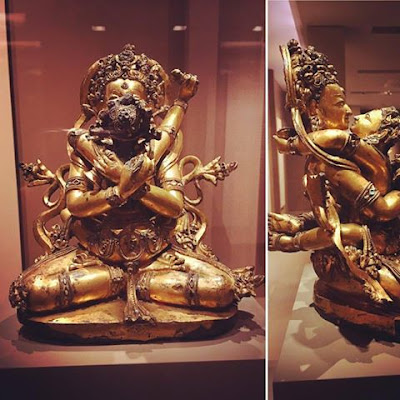Hello dear yogis,
I hope this week has treated you well. I know that at this time of year there's a lot of excitement in the air, and also a fair bit of anxiety floating around -- there's a wonderful quote by the American teacher Ram Das which is, "If you think you're enlightened, go spend a week with your family." Even the most zen among us can find ourselves getting overwhelmed or unexpectedly triggered spending lots of intense time with family or getting in a pickle over Christmas dinner. So in that spirit, I've recorded a guided meditation for you (and for me -- I certainly use these techniques when I need them!). It's designed to help you feel grounded and calm, and reconnect with your own inner light and warmth.
You can find the meditation in the post below, or go to my new Soundcloud page here. I'll be putting more meditations on this page in the new year, along with some of my favorite chants.
My biggest tip for any time in life when there's lots going on is to slow everything down. We've worked a lot together in our yoga classes with slowing down our movement, so that it's careful and considered. I find that when I slow down my physical practice, I really notice the beauty and grace of what's happening. The same can be true in everyday life -- very often we get more flavor from the moment when we slow down a little; it's like the difference between absent-mindedly scoffing a piece of toast compared to actually sniffing the lovely smell of it when it's just out of the toaster with butter melting (and then scoffing it, of course).
I recently interviewed the founder of Copenhagen's Institute of Happiness about the idea of hygge, the Danish word for coziness (he's written a book about it). What was interesting is that besides the superficial tips for creating hygge -- good soft lighting, lots of natural fabrics and so on -- he really emphasized taking time to enjoy simple things. So, cooking slowly, savoring a cup of hot chocolate, really listening when we're having a conversation. Less rush. Often we have a lot of expectations around big events like Christmas, and generally what life decides to serve up can be pretty different! When we let go of rushing or trying to make things "perfect", it has this beautiful effect of creating space around a moment. And where there's space, there's also possibility -- the possibility for the moment to be something unique and unexpected, and maybe even wonderful.
I wish you all a really sweet and special Christmas and new year. xx










